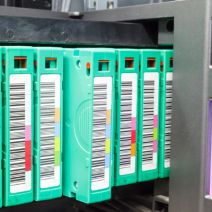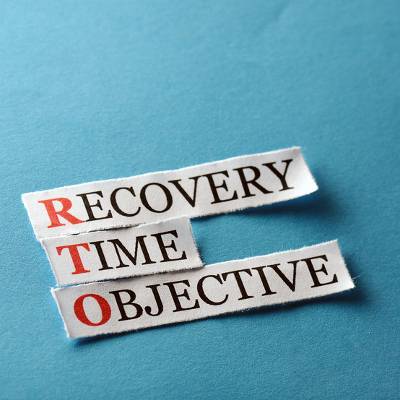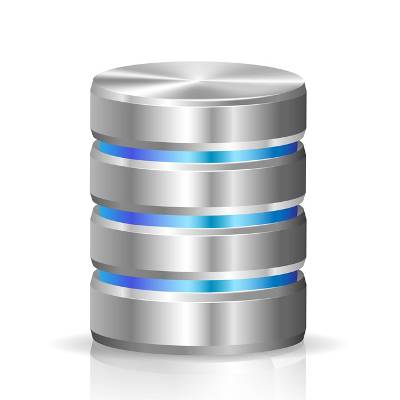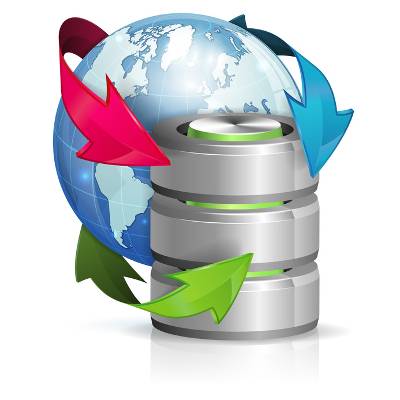Annually, on March 31st, World Backup Day serves as a dedicated reminder to highlight the pivotal role of regular data backups in ensuring the seamless flow of information. While this awareness day effectively emphasizes a foundational best practice, we strongly advocate for an ongoing commitment to the continuous maintenance and safeguarding of backups, extending well beyond the confines of a single day.
Directive Blogs
World Backup Day, observed on March 31st annually, serves as a designated occasion to underscore the critical importance of regular data backups for ensuring data continuity. Although this day effectively highlights a fundamental best practice, we firmly advocate for a continuous commitment to maintaining and safeguarding backups rather than confining such awareness to a single day.
Business technology is known to be remarkably finicky, particularly if you do not have the requisite knowledge to manage and maintain it. After all, there is a reason why you hire an IT department or a managed service provider to handle this role. What happens if your technology fails, though? Do you have a plan in place? What does a plan like this even look like, anyway? Let’s dig into the details.
In business, there are always issues that need to be met. Often, there are so many that finding which ones to give priority is a chore all in itself. Choosing the best path forward depends on the situation, so when you are considering your organization’s disaster recovery you have to take into account every troubling situation your business can encounter. This month let’s go through some of the most prevalent disasters that a business can face.
A disaster can take many forms, from a raging snowstorm to deleting the wrong file. Regardless of what kind of disaster you face, you can know that it doesn’t take much to impact a business, especially if the business doesn’t have a business continuity plan in place. How does your business recover from such a devastating scenario? How can it get its data back and in proper working order? That’s what we want to tell you about today.
No one can tell when a disaster is going to hit your business or what form that disaster is going to take. The cause could be a storm, human error, or some freak occurrence that nobody could have seen coming. In order to get back up and running after one of these incidents a company needs to have a strong business continuity strategy. An essential part of this strategy is knowing how to recover data depending on the way it’s lost. Getting data back and working for your company is the only way to stave off ruin, so let’s look at data recovery strategies that can literally save your business.
We often think about disasters in the context that they completely destroy the office, rendering your business incapable of operations. However, this is only part of what is encompassed by the term “disaster,” and the whole picture is far more terrifying. Any disruption to your operations can be considered a disaster in its own right, so we wanted to take some time to go over what you should look out for with your disaster planning.
Running a business is stressful, but so is thinking about a future where that business (and its data) no longer exists. If you’re not careful with your preparedness, you could stare down a disaster with no hopes of recovery. This is why we urge you to take proactive action now—so you can prevent these kinds of scenarios from taking your business off the market for good.
For modern organizations that depend highly on their technology, nothing is quite so scary as an event that can completely marginalize its ability to operate. This doesn’t need to be a fire, flood, or some other major cataclysm; it could be something as simple as some of your old IT fails and you’re not ready for it. This week, we thought we’d briefly go through what a catastrophic failure looks like and some steps you can take to keep your business from experiencing one.
There are countless ways your organization could face down a disaster, whether it’s a high-profile natural disaster, a physical disaster, or a technology-related disaster. If you aren’t prepared to face the consequences, your business could falter in the face of such incidents. How can your business best prepare itself for all manners of disasters?
A good business owner envisions the future and what it could bring about. You may have already devoted a considerable amount of time to the good things that could happen, but how often do you picture the bad? If you don’t imagine the worst-case scenario, you could be putting your business’ life on the line. Are you prepared to deal with a data loss incident?
Business can be difficult when everything goes right, but when disaster strikes, serious issues arise that need to be answered fast and if you don’t have a business continuity plan in place, your business will be in peril. It doesn’t matter what you do, if circumstances decide that your business needs to shut down, having a disaster recovery policy in place as a part of a larger continuity plan, will do more than you think to save your business.
When considering a continuity plan for your business, you need to consider some scenarios that may not ever happen. This is called risk management and it is the basis of keeping your business up and running regardless of the situations that it encounters. This month, we thought we would outline some of the variables that need to be addressed when creating a comprehensive business continuity plan.
Businesses were just hit with one of the worst disasters possible, and many of them were not prepared. It’s not often that a global pandemic hits, but businesses that were prepared to react to it were much more successful than ones that were forced to shoot from the proverbial hip. So while many businesses were overrun with new costs brought forth by the pandemic, the businesses that considered a situation like the one we’ve been facing for well over a year, and had a strategy for what they needed to accomplish to keep continuity during an event such as the COVID-19 pandemic, are faring quite a bit better than those that didn’t have a plan. This month we thought we’d outline a few ways your business can improve its disaster preparedness.
All businesses store and transmit data on a regular basis. From financial spreadsheets to client information to employee records, there is no shortage of data required by most organizations to maintain operations. What would you do if all that data were to suddenly vanish into thin air, or worse, be stolen by hackers?
Data recovery is a major pain point for small businesses, but not all organizations have the same resources and assets that make it possible. Small businesses in particular are more prone to forego data backup and disaster recovery because it does not provide an immediate return on investment. Well, we’re here to tell you that this mindset is wrong.
With the future so uncertain, it’s no surprise that many organizations are turning their focus toward business continuity. There are a lot of components that go into making a successful continuity plan, and if you want to optimize your chances of survival in the face of a disaster, you need to ensure that all your bases are covered.
When considering a continuity plan for your business, you need to consider some scenarios that may not ever happen. This is called risk management and it is the basis of keeping your business up and running regardless of the situations that it encounters. This month, we thought we would outline some of the variables that need to be addressed when creating a comprehensive business continuity plan.
Every business needs a continuity plan (BCP) so that if their business is forced to deal with problems that arise for any reason, that they have a working plan to get the business back up and operating as intended quickly. It’s one thing to have it all written down on paper, outlining how things are supposed to go, and quite another thing to have a working strategy when faced with operational interruptions. Today, we’ll go through some of the basics of business continuity to help you understand all that goes into a successful plan.
The Novel Coronavirus has made its way around the world and it has certainly changed the way a lot of businesses do things. Some businesses have put in some type of disaster recovery platform. This is basically a plan for returning to continuity after some type of disaster, but we are seeing that many business continuity plans were not broad enough to take on a worldwide pandemic. Sadly, many of these businesses won’t open again.
With most businesses dipping into their disaster recovery strategies, and millions of workers either out of work or working remotely, it is honestly a great time to remind you that March 31st is World Backup Day. This is a day where we help promote the idea of taking backups of your crucial IT systems to ensure that you have access to your important information if a disaster were to strike your business.
World events have always had a big impact on the banks that one finds on Wall Street, but in many ways, the one that coronavirus (COVID-19) has demonstrated has been unprecedented. As such, it almost provides a case study of the importance that disaster recovery planning has for any business… Wall Street institutions included.
Are your security safeguards up to snuff? If a disaster were to happen, would you be able to recover your data and bounce back? Does your team understand and implement best practices when it comes to protecting your customer data? Do you know if any software you are running is about to reach end-of-life? If you’re not sure, then it’s time for an IT Assessment. Don’t think your organization needs it? Here are three benefits an IT Assessment can provide your business.
Let me ask you this: does your business have a dedicated data backup and disaster recovery system? If not, we need to talk. A comprehensive backup and disaster recovery platform (BDR) can turn out to be one of the most critical parts of managing a business’ IT infrastructure. By having a plan to turn to in the event a serious problem such as ransomware or a natural disaster descends upon your business, you can be better prepared.
You don’t need to be repeatedly told just how important risk management is. If you did, you probably wouldn’t have made it this far. One problem you see from business owners today is that while they understand just how many problems there are--and which ones they need to find solutions for first--they want to grow their company so fast that they overlook potential problems and end up hurting their business as a result. This month, we thought we would talk a little bit about contingency planning and how, if it is done right, it can have a marked effect on your business’ ability to carry-on after a problematic event.
For the modern business, ensuring that you have contingencies in place will go a long way toward keeping you in business if disaster strikes. One of the contingencies many businesses choose to make as part of a business continuity strategy is a disaster recovery plan. Disaster recovery is more than restoring data, it can mean mobilizing people and capital against time. Let’s take a look at two of the core components of a comprehensive disaster recovery strategy, Recovery Time Objective and Recovery Point Objective.
Businesses need to be extremely careful about how they protect their interests, but just in case something unfortunate happens, you want to have measures in place to guarantee that your future is secure. To this end, data backup and disaster recovery is critical. We’ll walk you through what you need to know about implementing data backup and disaster recovery, including the best way to make it happen.
Let’s face it; nobody wants to talk about disaster recovery, as even invoking these words makes the possibility a reality. Unfortunately, this is something that has to be discussed, as your business depends on it. This might seem like hyperbole, but if you knew what is at stake, you’d likely agree with us.
Data backup tends to carry with it the association that your business could end at any moment, and while this is an important reason to implement data backup, there are countless others to consider as well. You might find that they are just as important to your organization as saving it from a devastating data loss disaster.
With data looked on as more of an asset than ever organizations are finding that their data backup and recovery system needs to be comprehensive. By knowing more about backup and recovery, you stand to be able to plan the solution to meet your company’s needs. Today, we will look at the different types of data backup and introduce you to four terms you need to understand.
What would happen if you were in the middle of typing a report or performing some task, and the office suddenly lost power? Too many would find themselves staring blankly at an equally blank screen as their infrastructure suddenly ceased operations. However, there is a device that can help save you from the worst effects of sudden power loss.
While many may consider an audit of any kind to be a pain in the neck or worse, they can actually be an effective way to ensure that businesses are following best practices and remaining compliant. After all, nobody wants to be the company that failed an audit. Despite this, many companies aren’t up to standard where their IT is concerned, and it has an impact.
No business owner wants to experience data loss in any way, shape or form, which is why it’s so crucial that preventive measures are taken. If you don’t have protections in place, you may find yourself out of business due to a data loss disaster. While that’s certainly the worst-case scenario, the other consequences of data loss are downright troublesome in their own right.
As a business owner, you expect to stay in control of what your business does. Unfortunately, there are certain variables in running a business that simply can’t be controlled, like the weather. Therefore, you need to take special care to ensure that these uncontrollable instances don’t become a threat to your business’ prolonged existence. To this end, we recommend a business continuity plan.
By now, you’ve probably heard about the importance of business continuity and disaster recovery planning for small businesses. According to FEMA, more businesses have business continuity plans than ever before. With so many SMBs looking to secure their future, there are still a few aspects of business continuity planning that today’s business need to comprehend. After all, there is more to it than just data backup. Disaster recovery is something that needs to be planned, practiced and updated.
It should come as no surprise that the practice of business continuity planning is one that every business needs to undergo. This planning serves as essentially your only insurance against some form of data disaster or another. Consider your own business for a moment--could it survive a fire, a critical failure in part of your infrastructure, or theft? With a business continuity plan, there’s a chance it just might.
It’s critical that you protect your business’ important assets, including perhaps the most important of all: its data. One of the best ways to do this is by implementing a solid backup solution. But what’s the best way to approach data backup? After all, every business is going to have different needs. We’re here to tell you all about these different needs, and how your organization can implement a reliable backup solution based on yours.
If you don’t consider the worst-case scenario when preparing your business’ disaster recovery strategy, you’ll inevitably suffer from it when it does happen. Taking into account all of these nuances is one of the main ways your organization can prepare for such an occasion. All of these instances need to be considered when putting together your organization’s business continuity plan. We’ll discuss some of the major parts of it, and why they are crucial.
Data might be the single most important asset of any business, but you would be shocked to hear about how many organizations don’t consider data loss to be a prominent threat. The fact remains that it doesn’t take an immense disaster to wipe out an entire infrastructure, and that you should expect the worst to happen regardless of how unlikely it is to do so.
Sometimes Mother Nature simply isn’t on your side, or you’re unfortunate enough to experience a troublesome disaster that threatens to knock your business off its feet. While various parts of the world are known for experiencing deadly natural disasters, other regions might not be as prone to them, giving business owners the wrong idea. It’s not a question of whether you’ll be hit with a crippling disaster, but when.
As a business owner, you’ve surely thought about what the future holds for your organization. However, one of the things that you need to think about that’s not often considered is the event of a data disaster. How can your business bounce back from such a catastrophic event? One of the first steps is understanding your data backup and disaster recovery process, as well as how you can improve your current setup.
Few organizations take business continuity planning as serious as financial organizations do. The Federal Reserve Bank (FRB) and Securities and Exchange Commission (SEC), as well as the organizations they oversee, depend heavily on technology for their daily operations. For these establishments, a severe data loss event or significant downtime has the potential to cripple the economy, depending on the severity. As such, they require all of the institutions that they have jurisdiction over to meet certain business continuity benchmarks.
A recent surge of hurricanes, wildfires, earthquakes, and floods have crippled major cities and devastated entire regions all over the world. In the aftermath of these events, business owners are faced with a few glaring truths - one of which is the undeniable vulnerability of their business’ future in the event of a disaster. Most of the major news outlets are reporting this figure: according to the Federal Emergency Management Agency (FEMA), 40% of small businesses never recover from a disaster. Despite all the literature and precautionary tales surrounding these catastrophic events, there are still an overwhelming amount of businesses that choose not to prepare for a disaster until it's too late.
Considering the recent weather events in the Southern United States, it only seems prudent to address a few considerations that may not be the first to come to mind when making business arrangements for such occurrences. For instance, what are the expectations that employees are held to in the case of a weather disaster?
Every business has to deal with a certain amount of risk from various factors, from hackers, natural disasters, or user error. As a business owner, it’s your responsibility to ensure that your organization can bounce back from a potentially dangerous situation with minimal casualties. We’re here to help you understand the importance of a risk assessment, and what you need to look out for.
It doesn’t take much to derail a business. Even the slightest disruption in power can lead to an unexpected power-down, and something as simple as a severe rainstorm could lead to floods that wash away your data. The point stands that you have everything to lose, and without data backup and disaster recovery, your business practices could be in danger.
Why You Need Backup and Disaster Recovery
Every organization should have a sound plan to recover any data that’s lost due to unexpected disasters. It’s been proven that organizations that fail to recover lost data within 7 days of the incident, typically go out of business within one year. There are many reasons why data backup and disaster recovery solutions need to be implemented. Here are just a few of the threats that could uproot your business and disrupt operations.
- Natural disasters: Floods, fires, electric storms, tornadoes, hailstorms, and so on, all have the potential to not only destroy your physical infrastructure, but also your business’s data. Therefore, if you’re in a region that’s prone to extreme weather conditions, you need to consider backup and disaster recovery.
- Cyber attacks: Data breaches are well-known culprits of data loss. It’s not easy to predict what a virus or malware will do, but most often, they’re designed to steal your data, delete it, or lock it away until a ransom is paid. In all of these cases, it’s best to have your data backed up so it can be safely restored.
- User error: The biggest threats often come from those who are supposed to have access to your data, not just those who don’t. If an end-user accidentally deletes a file, moves it somewhere it doesn’t belong, or hands over credentials to a hacker on accident, your data is put at risk.
- Hardware failure: The inevitable part of working with technology is the fact that it will eventually fail and be rendered obsolete. This can happen when you least expect it, and the costly downtime can be a major setback for your business - not to mention the data that could be lost if a server were to go down.
What You Should Look For
Not all backup and disaster recovery services will be the same, nor should they be. You need a solution that’s customized to meet the specific needs of your business. Here are some of the best features to look for in a BDR solution, and why they’re critical for the continued functionality of your business.
- Cloud and off-site backup: You don’t want to store your data backups on in-house tapes. Rather, you want them secure in an off-site location, like the cloud or a data center. This way, you can know that your data is stored in a compliant location that can’t be damaged by natural disasters.
- Quick recovery time: You want to be able to rapidly deploy your business’s data to your infrastructure in order to minimize downtime. Tape backup can make this part of the recovery process long-winded and wasteful, but BDR can automatically deploy your data through the cloud, making recovery practically instantaneous.
- Comprehensive backup: Furthermore, you want to make sure that your data is as recent as possible. Tape backup is inefficient for this purpose, while BDR can take backups of your data as often as every fifteen minutes - maybe even more often.
For more information about BDR and business continuity, contact Directive at 607.433.2200.
 The continuity of your business should be a major priority, especially considering how the livelihood of yourself and your employees is on the line. Believe it or not, there are some organizations out there that don’t give a second thought to the preservation of their data and critical assets. Therefore, it’s clear that you need to pay proper attention to how your organization handles problems like natural disasters, data loss, hacking attacks, and other hazardous incidents.
The continuity of your business should be a major priority, especially considering how the livelihood of yourself and your employees is on the line. Believe it or not, there are some organizations out there that don’t give a second thought to the preservation of their data and critical assets. Therefore, it’s clear that you need to pay proper attention to how your organization handles problems like natural disasters, data loss, hacking attacks, and other hazardous incidents.
 There’s no question that data backup is absolutely critical for the success of any modern-day business, but how does your organization go about it? Just like how we rely on quick snapshots to capture moments with our smartphones or digital cameras, most backup solutions take advantage of image-based backup technology. How does this kind of data backup work, and what are the benefits it provides your business with?
There’s no question that data backup is absolutely critical for the success of any modern-day business, but how does your organization go about it? Just like how we rely on quick snapshots to capture moments with our smartphones or digital cameras, most backup solutions take advantage of image-based backup technology. How does this kind of data backup work, and what are the benefits it provides your business with?
 Today is Disaster Preparedness Day! This means that there’s no time quite like the present for preparing for potential future data emergencies. While the type of disasters vary immensely depending on your business’s geographical location, every business needs a disaster recovery plan implemented as soon as possible.
Today is Disaster Preparedness Day! This means that there’s no time quite like the present for preparing for potential future data emergencies. While the type of disasters vary immensely depending on your business’s geographical location, every business needs a disaster recovery plan implemented as soon as possible.
 September 30th is Disaster Preparedness Day. This gives us a great reason to go over some of the most common disasters that can potentially affect your businesses. There are dozens of potential disasters to choose from, but since we’re an IT company, we’re going to focus on the four top disasters that can mess with your company’s IT infrastructure.
September 30th is Disaster Preparedness Day. This gives us a great reason to go over some of the most common disasters that can potentially affect your businesses. There are dozens of potential disasters to choose from, but since we’re an IT company, we’re going to focus on the four top disasters that can mess with your company’s IT infrastructure.
 If you don’t already have a backup solution put in place, no time is better than the present to consider what it would cost your business if you were to lose everything in one fell swoop. There are plenty of ways you can back up your data, but the reality of the situation is that if you were to lose your business’s information, you wouldn’t be able to continue operations. It would put the entire future of your company in jeopardy, so you need to be absolutely certain that your backup and disaster recovery solution is fool-proof.
If you don’t already have a backup solution put in place, no time is better than the present to consider what it would cost your business if you were to lose everything in one fell swoop. There are plenty of ways you can back up your data, but the reality of the situation is that if you were to lose your business’s information, you wouldn’t be able to continue operations. It would put the entire future of your company in jeopardy, so you need to be absolutely certain that your backup and disaster recovery solution is fool-proof.
 If something debilitating were to happen to you, could your business carry on? This isn’t a pleasant scenario to think about, but it’s absolutely necessary to have a contingency plan in place for reasons like this. Also known as a business succession plan, if you have a plan in place, then you don’t have to worry about what the future holds, at least, for your business.
If something debilitating were to happen to you, could your business carry on? This isn’t a pleasant scenario to think about, but it’s absolutely necessary to have a contingency plan in place for reasons like this. Also known as a business succession plan, if you have a plan in place, then you don’t have to worry about what the future holds, at least, for your business.
 2015 isn’t the year to go without backups. If there’s anything 2014 showed the world, it’s that businesses can fall victim to data breaches when they least expect it. You want to be prepared in the event of a data breach or data loss, and the easiest way to do that is by taking advantage of an external backup. Unfortunately, even an essential solution like data backup can be forgotten amidst the everyday operations of the average business owner.
2015 isn’t the year to go without backups. If there’s anything 2014 showed the world, it’s that businesses can fall victim to data breaches when they least expect it. You want to be prepared in the event of a data breach or data loss, and the easiest way to do that is by taking advantage of an external backup. Unfortunately, even an essential solution like data backup can be forgotten amidst the everyday operations of the average business owner.
 You always hear about IT professionals discussing the importance of data backup. Why? Because it’s one of the single most-important processes you can integrate into your business continuity plan. While all managed services present a value to your business, only the Backup and Disaster Recovery (BDR) solution is capable of restoring data that has been lost thanks to unexpected hardware failures or natural disasters.
You always hear about IT professionals discussing the importance of data backup. Why? Because it’s one of the single most-important processes you can integrate into your business continuity plan. While all managed services present a value to your business, only the Backup and Disaster Recovery (BDR) solution is capable of restoring data that has been lost thanks to unexpected hardware failures or natural disasters.
 Every business owner knows how important data backup is to their company's continuity plan, and they realize that a disaster recovery solution can help save them in the event of catastrophe. However, some businesses think they are the same thing, and they are sadly mistaken. While they are similar, a backup is not a disaster recovery solution.
Every business owner knows how important data backup is to their company's continuity plan, and they realize that a disaster recovery solution can help save them in the event of catastrophe. However, some businesses think they are the same thing, and they are sadly mistaken. While they are similar, a backup is not a disaster recovery solution.
 Your mind is racing at a mile a minute, and you keep a to-do list for all of the things you are supposed to do. Unfortunately, that to-do list is often forgotten about. You save it as a .DOC text file on your computer, which has been making a strange clicking noise lately. But one day, the clicking sound gets worse, and worse, and worse, until your computer stops working completely. Just like that, all of your data is gone, and that's when it hits you.
Your mind is racing at a mile a minute, and you keep a to-do list for all of the things you are supposed to do. Unfortunately, that to-do list is often forgotten about. You save it as a .DOC text file on your computer, which has been making a strange clicking noise lately. But one day, the clicking sound gets worse, and worse, and worse, until your computer stops working completely. Just like that, all of your data is gone, and that's when it hits you.
 A business that manages its data efficiently will be well positioned to handle growth. One of the most crucial components of data management is ensuring that everything is backed up properly; an increasingly difficult task as businesses use more data every year. Implementing a cost-effective and reliable data backup solution should be the goal of every IT professional.
A business that manages its data efficiently will be well positioned to handle growth. One of the most crucial components of data management is ensuring that everything is backed up properly; an increasingly difficult task as businesses use more data every year. Implementing a cost-effective and reliable data backup solution should be the goal of every IT professional.
 It's good to backup your data, but can you have too much of a good thing? While this may be the case for several enjoyable activities like partying and buffets, this isn't the case with data backup. In fact, the more layers of data backup you have, the more secure you will be. How good is your data backup solution?
It's good to backup your data, but can you have too much of a good thing? While this may be the case for several enjoyable activities like partying and buffets, this isn't the case with data backup. In fact, the more layers of data backup you have, the more secure you will be. How good is your data backup solution?
 You may feel like your computer network is immune to data loss, but according to a study by Blackblaze.com, 46% of users experience data loss every year. Whether it's from something big like a natural disaster, or minor like improperly removing a flash drive, every form of data loss is costly and can be prevented with a data backup plan.
You may feel like your computer network is immune to data loss, but according to a study by Blackblaze.com, 46% of users experience data loss every year. Whether it's from something big like a natural disaster, or minor like improperly removing a flash drive, every form of data loss is costly and can be prevented with a data backup plan.
 What would happen if your business experienced a disaster and your sensitive information was erased? If you don't have a business continuity plan in place that includes data backup and recovery, then it's highly unlikely your company will survive. To protect your business, you will want to consider and choose one of these three backup solutions.
What would happen if your business experienced a disaster and your sensitive information was erased? If you don't have a business continuity plan in place that includes data backup and recovery, then it's highly unlikely your company will survive. To protect your business, you will want to consider and choose one of these three backup solutions.
 In a recent survey of small businesses, only 13% of respondents believed themselves to be susceptible to a disaster resulting in data loss. That means 87% of small businesses must be located in a fortress where they are protected from every natural disaster--yeah right! No business is immune from disaster; therefore, every company needs a disaster plan.
In a recent survey of small businesses, only 13% of respondents believed themselves to be susceptible to a disaster resulting in data loss. That means 87% of small businesses must be located in a fortress where they are protected from every natural disaster--yeah right! No business is immune from disaster; therefore, every company needs a disaster plan.
 When a major storm slams into your business and knocks out power, who are you going to call for help? If your communication system is hosted on your in-house IT infrastructure, then you won't be able to call anybody because your phones will be down. This also means your customers won't be able to call you for help.
When a major storm slams into your business and knocks out power, who are you going to call for help? If your communication system is hosted on your in-house IT infrastructure, then you won't be able to call anybody because your phones will be down. This also means your customers won't be able to call you for help.
 If you are a business that doesn't have an IT support plan, then you're running on borrowed time. It's the nature of technology to eventually break, and when it does, it can disrupt the entire flow of your business. A reliable IT support plan is crucial to your business continuity plan. Without a plan, you will have a big mess on your hands.
If you are a business that doesn't have an IT support plan, then you're running on borrowed time. It's the nature of technology to eventually break, and when it does, it can disrupt the entire flow of your business. A reliable IT support plan is crucial to your business continuity plan. Without a plan, you will have a big mess on your hands.
 What would you say if we told you that disc error rates have been found to be ten times worse than what the vendor's drive specifications state? They're not lying, they are just predicting their own drive's failure rate. In order to be accurate, you must account for failure rates associated with the disk controller, the cables, the PCI bus, the memory, and the processor as well.
What would you say if we told you that disc error rates have been found to be ten times worse than what the vendor's drive specifications state? They're not lying, they are just predicting their own drive's failure rate. In order to be accurate, you must account for failure rates associated with the disk controller, the cables, the PCI bus, the memory, and the processor as well.
 Every business needs to backup their data. If your company is hit with a disaster, and there is no backup in place, then it will be a critical hit to your operation. Backing up data with tape is a widely used solution, and while this is better than nothing, it is very inefficient compared to using BDR.
Every business needs to backup their data. If your company is hit with a disaster, and there is no backup in place, then it will be a critical hit to your operation. Backing up data with tape is a widely used solution, and while this is better than nothing, it is very inefficient compared to using BDR.
 It wasn't too long ago when a person could go to his or her local supermarket and rent a copy of their favorite movie on VHS. When that novelty fell off, you could still get the movies at your local video store. Every town had one. Whether it was a chain such as Blockbuster or a locally owned store, millions of people relied on the video store in their town for entertainment for the better part of a quarter of a century.
It wasn't too long ago when a person could go to his or her local supermarket and rent a copy of their favorite movie on VHS. When that novelty fell off, you could still get the movies at your local video store. Every town had one. Whether it was a chain such as Blockbuster or a locally owned store, millions of people relied on the video store in their town for entertainment for the better part of a quarter of a century.
 One uncontrollable aspect in life is Mother Nature. There's no way you can stop a hurricane from ripping your roof off, but you can have an emergency plan in place for when/if it happens. People need to know what their responsibilities are and the action they need to take in those cases. How will your business continue operations in the event of a natural disaster?
One uncontrollable aspect in life is Mother Nature. There's no way you can stop a hurricane from ripping your roof off, but you can have an emergency plan in place for when/if it happens. People need to know what their responsibilities are and the action they need to take in those cases. How will your business continue operations in the event of a natural disaster?
 When it comes to your business’s technology infrastructure, the more basic it is, the better. Granted, a simple IT infrastructure isn’t always easy to install, especially when there are so many great solutions on the market that can be implemented to achieve optimal efficiency. Sometimes the best IT solutions are those that make your technology simpler to manage, and your network less complicated. That said, you’d think redundancy would complicate this formula, but it’s actually a necessity for your business continuity plan.
When it comes to your business’s technology infrastructure, the more basic it is, the better. Granted, a simple IT infrastructure isn’t always easy to install, especially when there are so many great solutions on the market that can be implemented to achieve optimal efficiency. Sometimes the best IT solutions are those that make your technology simpler to manage, and your network less complicated. That said, you’d think redundancy would complicate this formula, but it’s actually a necessity for your business continuity plan.
 Data Backup and Disaster Recovery (BDR) isn’t your average data backup solution. In fact, it’s far from any traditional backup tool that you might have used in recent years. Here’s how BDR is changing the way that organizations approach business continuity and ensuring their continued success and sustainability.
Data Backup and Disaster Recovery (BDR) isn’t your average data backup solution. In fact, it’s far from any traditional backup tool that you might have used in recent years. Here’s how BDR is changing the way that organizations approach business continuity and ensuring their continued success and sustainability.



